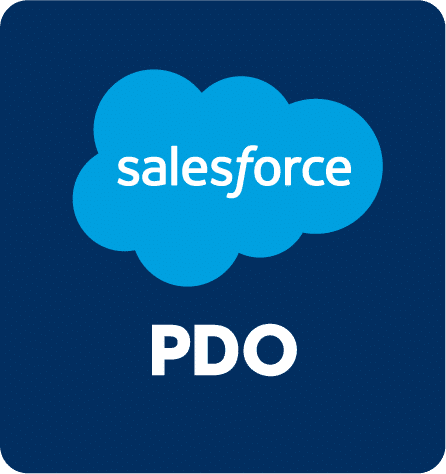
- Open Stack Development
How to Choose the Right OpenStack Development Services Provider for Your Project
Introduction
OpenStack Development Services are all over the marketplace! Ever wonder how to make the right choice and pick the best? In today’s rapidly evolving technological landscape, businesses are increasingly turning to cloud solutions to streamline operations, enhance scalability, and achieve cost efficiency. OpenStack, an open-source cloud computing platform, has emerged as a powerful option for organizations seeking flexible and customizable cloud infrastructure. However, leveraging the full potential of OpenStack requires specialized expertise and resources.
This is where the role of an OpenStack development services provider becomes crucial. Selecting the right partner can significantly impact the success of your project, whether you’re starting from scratch, expanding your existing infrastructure, or seeking assistance in optimizing your OpenStack environment.
In this comprehensive guide, we’ll delve into the essential factors to consider when choosing an OpenStack development services provider. From evaluating technical proficiencies to aligning with your project goals, we’ll equip you with the insights needed to make an informed decision. Navigating the landscape of service providers can be a daunting task, but armed with the right knowledge, you’ll be well-prepared to collaborate with experts who can turn your OpenStack aspirations into a reality.
Join us as we explore the key elements that should shape your decision-making process, ensuring that you not only harness the capabilities of OpenStack but also embark on a fruitful partnership with a development services provider that shares your vision.
Table of Content
- How to Define Your Project Requirements
- How to Choose the Right OpenStack Development Partner
- Conclusion
How to Define Your Project Requirements
Selecting the ideal OpenStack development services provider for your project requires clearly understanding your specific needs and expectations. Properly defining your project requirements lays the foundation for a successful partnership.
Here are the key aspects to consider when determining your project requirements:
1. Expertise and Experience
Look for a provider with a track record of expertise and experience in OpenStack development. Evaluate their previous projects, case studies, and technical proficiency to ensure they have a deep understanding of OpenStack technologies and its ecosystem.
2. Open Source Involvement
A reputable provider should actively engage with the open-source community. This involvement demonstrates their commitment to staying updated with the latest developments, fixes, and enhancements within the OpenStack framework.
3. Customization Capabilities
Every project has unique requirements. Ensure that the service provider can tailor their solutions to match your specific needs, allowing for a customized OpenStack deployment that aligns with your business objectives.
4. Scalability and Performance Optimization
Your chosen provider should be capable of designing and implementing a scalable OpenStack infrastructure. This ensures your system can grow seamlessly as your demands increase, without compromising performance.
5. Support and Maintenance
Post-deployment support and maintenance are crucial for the ongoing health of your OpenStack environment. Clarify the provider’s support offerings, including response times, issue resolution, and proactive monitoring.
6. Security Measures
Security is paramount. Inquire about the provider’s security practices, such as data encryption, access controls, vulnerability assessments, and compliance with industry standards.
7. Communication and Collaboration
Effective communication is vital for project success. Assess the provider’s communication channels, reporting frequency, and willingness to collaborate with your team to achieve shared goals.
8. References and Testimonials
Ask for references or testimonials from their previous clients. This allows you to gain insights into the provider’s performance, reliability, and overall client satisfaction.
9. Cost-Effectiveness
While cost is a factor, prioritize value over the lowest price. Consider the provider’s offerings in terms of features, support, and long-term benefits for your project.
10. Project Management Approach
Understand how the provider manages projects. A clear project management approach with milestones, deliverables, and regular updates ensures transparency and effective progress tracking.
11. Flexibility for Future Growth
Your project’s needs may evolve. Choose a provider who can accommodate future changes, upgrades, and expansions within your OpenStack environment.
How to Choose the Right OpenStack Development Partner
In the dynamic landscape of technology, OpenStack has emerged as a robust open-source platform for managing cloud infrastructure. Selecting the right OpenStack development partner for your project is a crucial decision that can significantly impact your project’s success. In this guide, we’ll walk you through the essential criteria to consider when evaluating potential OpenStack development services providers.
1. Research and Background Check: Begin your selection process with a comprehensive research phase. Look for OpenStack development providers with a solid reputation in the industry. Check their website, portfolio, and client testimonials to gauge their credibility. Assess their market presence, recognition, and overall reputation within the OpenStack community. This step will help you filter out unreliable options and focus on established and trustworthy partners.
2. Expertise and Skill Set: Technical expertise is a cornerstone of successful OpenStack development. Evaluate the skill set of the development team. They should possess in-depth knowledge of OpenStack’s architecture, components, and integration capabilities. Look for certifications, training, and any contributions they’ve made to the OpenStack community. A proficient team will implement solutions effectively and offer insights and best practices to enhance your project
3. Relevant Experience: Experience is a critical factor when choosing an OpenStack development partner Assess their past projects to determine if they have worked on projects similar to yours. An OpenStack provider with relevant experience will understand the challenges specific to your industry and can tailor solutions to meet your unique requirements. Request case studies or references to verify their track record and the success of their previous projects.
4. Technical Capabilities: OpenStack development involves a wide range of technical aspects, from infrastructure setup to deployment and ongoing maintenance. Ensure that the development partner has the technical capabilities to handle your project’s complexities. This includes proficiency in orchestrating virtual machines, storage management, network configuration, and security implementation. Discuss their approach to scalability, performance optimization, and troubleshooting.
5. Customization and Innovation: Your project’s requirements are unique, and a one-size-fits-all solution might not suffice. A reliable OpenStack development partner should prioritize customization and innovation. They should be able to tailor OpenStack components to align with your specific needs and business goals. In addition, a forward-looking partner will stay updated with the latest trends and advancements in the OpenStack ecosystem, ensuring that your project benefits from the most innovative solutions available.
Conclusion
In the rapidly evolving landscape of technology, partnering with the right OpenStack development services provider can make all the difference in the success of your project. As we’ve explored in this guide, the journey to finding the ideal provider is multifaceted and requires careful consideration of various factors.
Remember that your project’s unique needs and goals should always be at the forefront of your decision-making process. By thoroughly assessing the provider’s experience, expertise, track record, and alignment with your specific requirements, you can confidently make an informed choice.
OpenStack’s flexibility and scalability offer immense potential, but realizing its benefits requires a proficient and dedicated development team. A provider who not only understands OpenStack’s intricacies but also possesses a deep comprehension of your industry and business goals can propel your project to new heights.
When evaluating potential providers, delve into their communication practices, development methodologies, and commitment to ongoing support and collaboration. Building a strong partnership based on trust, transparency, and effective communication is vital to achieving a seamless development process and a successful project outcome.







